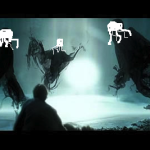Using a remote lander* with a camera, a UK-Japan team has set a record for filming the deepest fish. The fish is Pseudoliparis amblystomopsis, a deep-water snailfish, found so far only in the Northwest Pacific. The species was described in 1955 by a Russian scientist with the holotype described from 7.2km. The depth range is extremely deep, from 6.1km to 7.5km deep. The film taken by the joint team actually contains a group of 17.
The deepest record for any fish is Abyssobrotula galatheae, a cusk eel, known from depths of 3.1-8.4km. This species was only described in 1977. The deepest specimen is known form the Puerto Rico Trench but is likely to have a global distribution.
The deepest record of any fish spotted live is debatable but probably around 7km and this new record is a definite contender.
* A remote lander is an instrument pack that is deployed on the ocean floor. They are not tethered to the surface and for all practical purposes have no direct communication to the surface while on the floor. The lander ususally posses an array of instruments to measure temperature, conductivity, salinity, oxygen, and currents as well as either a time-lapse or continuous frame camera. Usually the cameras are tripped by either a motion detector or baited hook. Sonar is used to trigger the lander to release its weights and return to the surface.





Okay, I know bloggers aren’t supposed to be perfectionists when it comes to spell-checking and grammar, but when the mistake is in the title itself I just can’t be expected to keep quiet.
Your friendly neighborhood grammar police
Thanks for the catch. Fixed.
Hi Craig. The Galathea Report(Vol 14) describing Abyssobrotula galatheae has the holotype from the Kermadec Trench (SW Pacific) and other specimens from all over the Atlantin, Indian and Pacific Oceans…Way cool clip b.t.w., and I love your site.
Andrew,
Interesting Fishbase has it listed as Nielsen, 1977 with the full reference of
Nielsen, J. G. 1977 [ref. 3198]
The deepest living fish Abyssobrotula galatheae. A new genus and species of oviparous ophidioids (Pisces, Brotulidae). Galathea Report v. 14: 41-48.
which would jive with the Galathea Report. Why the late publication date?
According to the Wikipedia listing for Bathyscaphe Trieste, “While on the bottom, Piccard and Walsh observed small soles and flounders swimming away, proving that certain vertebrate life can withstand all existing extremes of pressure in earth’s oceans.” Wouldn’t these qualify as the deepest fish ever (or even possible on this planet, for that matter)?
According to the Wikipedia listing for Bathyscaphe Trieste, “While on the bottom, Piccard and Walsh observed small soles and flounders swimming away, proving that certain vertebrate life can withstand all existing extremes of pressure in earth’s oceans.” Wouldn’t these qualify as the deepest fish ever (or even possible on this planet, for that matter)?
Hey dobhran – It’s unlikely that the things seen by Piccard & Walsh were flatfishes. More likely to be swimming holothurians. One of the reasons is that flatfishes (Pleuronectiformes) are a quite evolved group and many of the abyssal fishes are mostly representatives of older groups. Also, these swimming holothurians are a fairly ‘common’ part of the abyssal fauna (as much as anything is ‘common’ down there!). Piccard 7 Welsh were also seeing the outside through extremely thick, rather small quartz windows that didn’t exactly give them imax quality viewing.